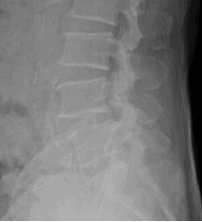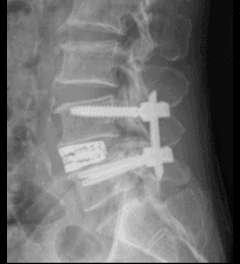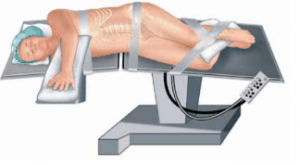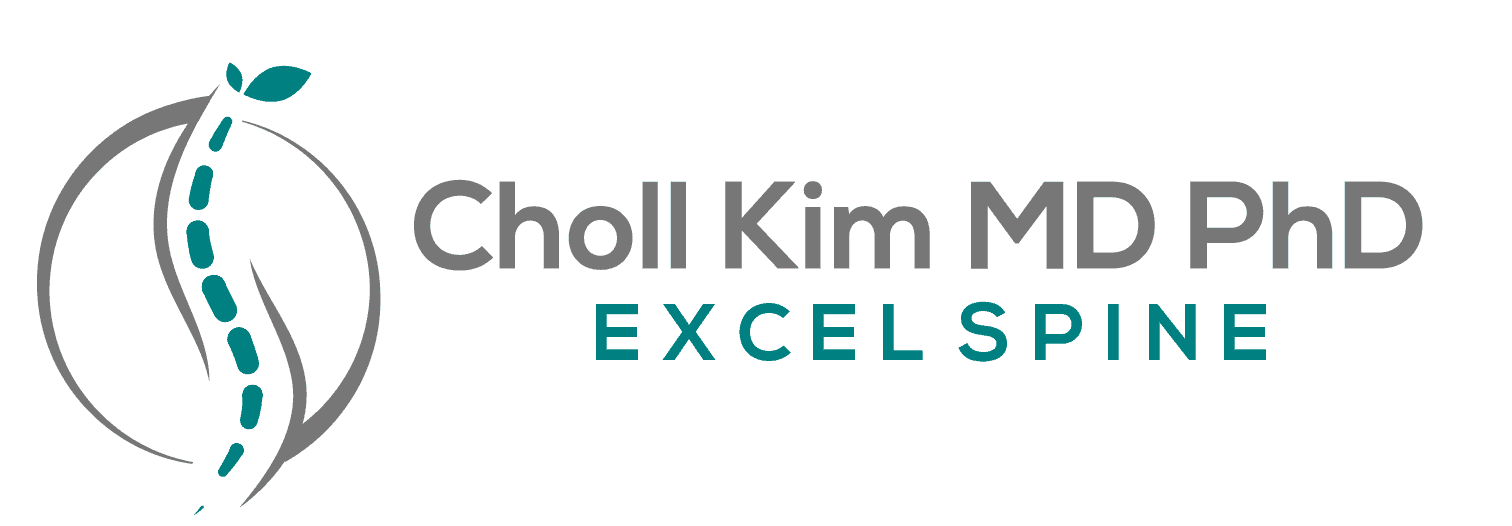What Is MIS LLIF?
Minimally Invasive Lateral Lumbar Interbody Fusion (MIS LLIF) is a type of spinal fusion surgery performed through a small incision on the side of the body. It is used to treat lower back conditions that cause pain and instability by removing a worn-out or damaged disc between two vertebrae and replacing it with a spacer to restore normal disc height.
The goal of this fusion is to eliminate abnormal movement between vertebrae, restore spinal alignment, and relieve pressure on the nerves. Over time, the spacer and bone graft material help the two vertebrae heal together and form one solid piece of bone.
Why Is MIS LLIF Performed?
MIS LLIF is performed to treat a variety of spine conditions that cause chronic back or leg pain due to instability, disc degeneration, or nerve compression. These conditions may include:
- Degenerative disc disease
- Spondylolisthesis
- Herniated discs
- Spinal stenosis
- Spinal deformities like scoliosis
- Recurrent disc issues after previous surgeries
LLIF is especially helpful when addressing issues in the lumbar spine, as it allows access to the damaged disc space without cutting through the major back muscles.
How Do You Prepare for MIS LLIF?
Preparation for MIS LLIF typically involves:
- A detailed review of your medical history, imaging studies, and symptoms
- Pre-operative imaging such as MRI or CT scans to plan the approach
- Stopping certain medications, such as blood thinners, if directed
- Smoking cessation, as smoking can interfere with bone healing
- Pre-surgical instructions on fasting, medications, and transportation
- Ensuring you have help at home after surgery for a few days
Your care team will provide specific guidance to ensure you are ready for a safe and successful surgery.
What Can You Expect During MIS LLIF?
During the procedure, you will be positioned on your side, known as the lateral position. A small incision is made on the side of your body, and instead of cutting muscles, the surgeon gently separates the tissues to access the spine. The damaged disc is removed, and a spacer (implant) is inserted between the vertebrae to restore disc height and relieve nerve compression.
In most cases, screws and rods are placed through separate small incisions in the back to stabilize the spine and allow for solid fusion. This combination provides structural support while the bones heal together.
How Is Minimally Invasive Lumbar Fusion Different from Conventional Fusion?
Traditional open fusion surgeries involve large incisions and cutting through muscles that stabilize the spine. This can lead to more pain, blood loss, and longer recovery times.
In contrast, minimally invasive lumbar fusion—including LLIF—uses small incisions and specially designed tools to preserve the surrounding muscles and tissues. When screws and rods are required, they are placed through 1-inch incisions on either side of the spine without detaching the muscles from their insertion points.
This minimally invasive approach significantly reduces muscle damage, leads to less pain, faster recovery, and a quicker return to daily activities.


What Is the Recovery Like After MIS LLIF?
Hospital Stay
Most patients stay overnight in the hospital and are discharged the next day. Pain is typically well-controlled with oral medications, and patients are encouraged to begin walking the same day as surgery.
Physical Activity
Walking is the most important activity during recovery. Patients should start with short, frequent walks each day and gradually increase duration and distance. Good posture and core engagement help aid recovery.
Incision Care
You may shower with the surgical dressing for the first few days. After that, showering with the incision uncovered is usually allowed. Avoid soaking the incision site (e.g., no bathtubs or pools) for at least 6 weeks.
Return to Work
- Sedentary jobs: Around 6 weeks
- Physically demanding jobs: Around 3 months A gradual return with light duties is encouraged before transitioning back to full-time work without restrictions.
Return to Activities
Dr. Kim provides detailed guidelines for returning to hobbies like golfing, biking, and working out based on your healing progress. Many patients resume normal activity levels within a few months.
What Are the Potential Risks of MIS LLIF?
While minimally invasive surgery reduces many risks, all surgical procedures carry some potential complications. Risks of MIS LLIF may include:
- Infection
- Bleeding
- Nerve injury or irritation
- Nonunion (failure of fusion)
- Hardware-related issues
- Blood clots
- Persistent or recurring symptoms
Dr. Kim uses advanced technology and careful surgical technique—including computer navigation and neuromonitoring—to minimize these risks and ensure optimal outcomes.
Are There Related Procedures to MIS LLIF?
Yes, depending on the location and type of spinal problem, other fusion techniques or decompression surgeries may be considered. These include:
- MIS TLIF (Transforaminal Lumbar Interbody Fusion) – performed from the back
- ALIF (Anterior Lumbar Interbody Fusion) – performed from the front of the spine
- XLIF (Extreme Lateral Interbody Fusion) – a similar approach to LLIF, often used for larger deformities
- Discectomy or laminectomy – procedures to remove disc material or decompress nerves without fusion
Each approach has specific benefits, and your spine specialist will recommend the best option for your unique condition.
Key Takeaways About MIS LLIF
- MIS LLIF is a minimally invasive spinal fusion performed from the side of the body.
- It removes a damaged disc, restores disc height, and relieves nerve compression.
- Compared to traditional fusion, MIS LLIF involves smaller incisions, less muscle damage, and a faster recovery.
- Most patients go home the next day and return to regular activity within weeks to months.
- Risks are low and minimized through advanced surgical techniques.
- Related procedures include TLIF, ALIF, and other forms of lumbar fusion.
Recommended Next Steps
If you are experiencing ongoing lower back pain, leg symptoms, or spinal instability and conservative treatments haven’t helped, MIS LLIF may be an effective solution. Speak with your spine care provider to see if you’re a candidate. With the right treatment, many patients regain comfort, stability, and the ability to return to the activities they love.



